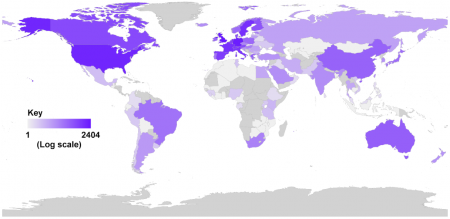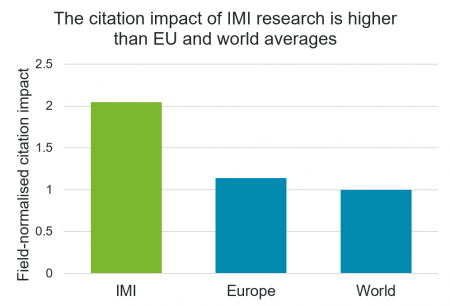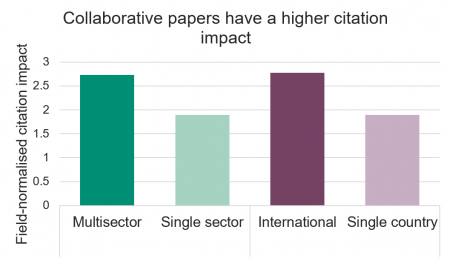IMI’s projects are prolific in their production of scientific papers, and what’s more, they’re delivering quality and quantity.
Much scientific knowledge is shared via scientific papers that are reviewed by other scientists and published in journals.
Every year, IMI analyses the publications produced by IMI projects. The latest report, prepared by Clarivate, studies IMI project publications up until the end of 2019. It shows that IMI projects continue to deliver large numbers of papers whose quality is comparable to that produced by other major research funding organisations.

Quantity…
On the numbers, by the end of 2019, IMI projects had produced a total of 5 943 publications covering diverse medical fields, including pharmacology, neuroscience, biochemistry and molecular biology, rheumatology, immunology, and more.
Furthermore, the papers involve authors in 110 countries across 6 continents.
… and quality
The report also looks into the citation impact of the papers – this represents that number of times other papers cite a paper. When adjusted to account for differences in between fields and years, this is often used as a measure of research quality.

Furthermore, over a quarter (26.9 %) of IMI papers are ‘highly cited’, meaning they are in the top 10 % of papers by journal category and year of publication.
IMI research also compares favourably with research funded by other well known organisations such as the Wellcome Trust, the Medical Research Council (MRC) and the Foundation for the National Institutes of Health (FNIH). This is similar to the result in previous years and shows that IMI is maintaining a high standard even as its output increases.
The impact of collaboration
The report also explores the links between collaboration and citation impact. A majority of papers from IMI projects involve either international collaboration (61.8 %) or collaboration involving researchers from different sectors (64.1 %).

Meanwhile papers involving researchers from different sectors have a higher citation impact (2.73) than papers where the researchers are from the same sector (1.89).
‘This report highlights again the excellence of the scientific research taking place in our projects, and underscores the added value of our international, cross-sector, collaborative approach,’ said IMI Executive Director Pierre Meulien. ‘The results presented in these papers add to our understanding of disease and are helping to advance drug development in diverse ways.’
